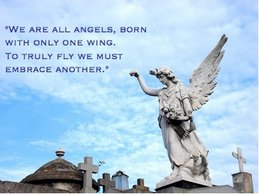Mirror neuron

The November, 2006, issue of Scientific American introduces a Mirror Neuron theory of autism that provides an intriguing glimpse into the possible biological underpinnings of autism.
In the 1990's, scientists discovered through brain imaging technologies that when humans and primates perform voluntary actions (such as reaching for something or pulling a lever), certain brain cells activate in the premotor cortex of the brain's frontal lobe. These activated neurons are called the motor command neurons. Researchers then subsequently discovered that a subset of these motor command neurons was also activated when a human or primate would watch someone else the perform the same action. This subset is referred to as mirror neurons.
It is believed that the mirror neurons, and the networks they are part of, not only enable humans and primates to send motor commands to muscles, but also to determine the intentions of other individuals by mentally simulating their actions. In primates, the role of the neurons may be limited to predicting simple goal-directed actions, but in humans the mirror neuron system may have evolved the ability to interpret more complex intentions.
A mirror neuron is a neuron which fires both when an animal performs an action and when the animal observes the same action performed by another (especially conspecific) animal. Thus, the neuron "mirrors" the behavior of another animal, as though the observer were itself performing the action. These neurons have been directly observed in primates, and are believed to exist in humans and in some birds. In humans, brain activity consistent with mirror neurons has been found in the premotor cortex and the inferior parietal cortex. Some scientists consider mirror neurons one of the most important findings of neuroscience in the last decade. Among them is V.S. Ramachandran[1], who believes they might be very important in imitation and language acquisition. However, despite the popularity of this field, to date no plausible neural or computational models have been put forward to describe how mirror neuron activity supports cognitive functions such as imitation.
 ABF, for the promotion of human rights and democracy in Iran
ABF, for the promotion of human rights and democracy in Iran



No comments:
Post a Comment